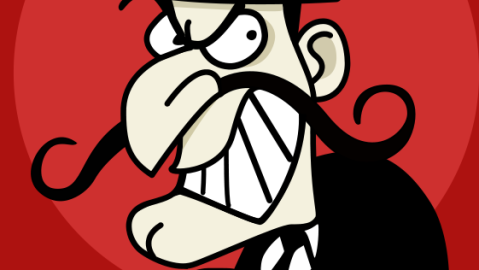Creating Better Villains: Part 1

In this two-part piece, we will examine the portrayal of villains in creative mediums, like novels and comics, and why they are severely lacking; I will also argue why it’s necessary to create better villains.
The large, eerie fortress; the lightning strikes occasionally illuminating his usually reptilian face; his teeth in his open mouth exposed and probably sharp; his laughter cackling and growing louder as he’s just revealed to some minion his awesome plan. The Saturday-morning cartoon villain is alive and doing well in his lair of stereotype.
Listen: can’t you hear? He’s still cackling — he’s still happy to be drawn out from the lazy, cobwebbed mind of bored writers. He’s won. He’ll always win whenever there are writers who equate children with idiots and villains with pure evil.
Enough. It’s time we take back the villain. It’s time we destroy his boring, cackling face, his sharp teeth, his banal “evil for evil’s sake”, his consistent outlining of his plans to quivering minions or tied up heroes in shadowed fortresses. We’re better than this, which means our villains can be, too.
Or at least they can be if writers start caring again.
What are They Opposing?
When creating an enemy or opponent, writers too easily fall into the trap of labeling these characters’ actions as “evil” and portraying said evil as everything that’s the opposite of the nauseatingly nice, rather than something opposed to the benign, the content, or the fulfilling.
The problem starts with what writers or creators assume are good things. The villains are so evil because what they’re opposing is so disgustingly wonderful.
Creators forget an important part of human nature: Forever turns everything evil, excess moulds all things into poison. Too much love or friendliness turns worlds into creepy asylums of purity; rainbows and rabbits, chocolate rivers lined with honey, a diabetic hell asserted as heaven. Normality will do: nonviolence, a stable career, a way to feed ourselves, some time for friends, non-hurtful hobbies. Start here, undermine this most basic and most real of everyday existence, before you start at the polarised end of morality.
What can upset stability? Yes: wars between giant demons, evil dragons, poison factories, monster robots. But why start with something so obviously evil? All we’re doing is phoning up the evil fortress again. It’s too easy, it’s boring and another example of how extremes makes all things either mundane or despicable.
So again: what upsets stability? How about something as simple as losing a loved one? How about being the target of hate because you accidentally brought about the death of your mother? No robots, no armies: just a broken heart that refuses to mend. And its breakage is what makes the motivation so sharp, so defined. Any prophet can march with an army, but it takes a harsher, personal edge to define yourself according to such local revenge. And there’s no reason this personal grievance can’t have a powerful, earth-shattering impact as big as a dragon army.
For example, in The Brothers Karamazov, the villain is one of most mistreated, undermined, wretched examples of humans ever created; and, worse still, the target of the parricide that begins the novel is even worse, helping to keep up the horror of the villain’s poor life. But we are occasionally introduced to mutual tenderness, regret and self-loathing from both. We recognise that the father’s hatred targeted at the world and whose flames he stokes beneath the lives of others are brought on himself three times as hard. His killing is mercy, not malevolence.
Perhaps one of the most striking examples comes from Brian Azzerello and Lee Bermejo’s comic mini-series Lex Luthor: Man of Steel.
I despise Superman – he’s perhaps the most consistently worst-written, most boring, most uninteresting, most despicable bulge of protagonist ever vomited into red underpants. In Lex, however, Azzarello tells the story from the perspective of Superman’s nemesis, Lex Luthor. (Additionally, it’s one of the most beautifully-drawn comics in existence. Bermejo is incredible.)
Luthor believes himself to be defending his city, his world, from an alien menace. Superman, as always, is portrayed as all-powerful, god-like. Luthor recognises that with no one to hold Superman accountable, what’s to stop Superman taking over the planet and enslaving humanity? Luthor, as a philanthropic and caring businessman, believes it his duty to do what he must to protect us from that imminent danger. I love this story, even if it takes very liberal leaps with both characters – though, not so liberal we can’t believe it: In the official timeline of the comics, Superman has gone mad and rampaged before; Luthor does become the US president.
The point though is recognising Luthor and the Karamazovs are not acting out of some boring Saturday-morning comic villain mindset, but from reasons we can most of us at least understand. What they’re opposing is, for them, not actually good but what they themselves believe to be bad, evil, dangerous. We might disagree with Luthor wanting to stop Superman, but, with Azzarello and Bermejo’s take, we can at least understand him. Thus, he’s not fighting “good” because he’s a twisted, evil psychopath, but because he believes this is something worth opposing.
Which leads to my second point that I will post tomorrow in the conclusion…
Next: Part II – Villains are Not Evil
Image Credit: Snidely Whiplash / Wikipedia (source)




